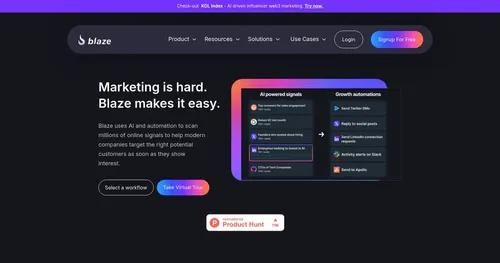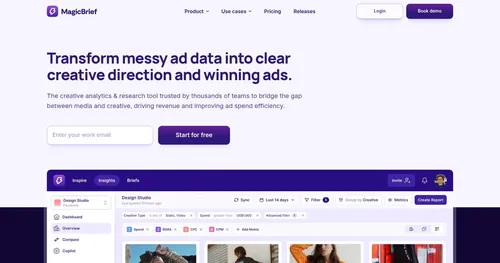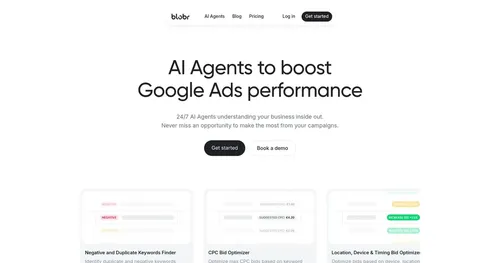Common Room
Common Room feels like a command center for go-to-market teams, pulling in signals from every corner of the internet to help businesses zero in on their best prospects. I think it’s the kind of tool that makes you wonder how sales and marketing teams ever got by without it. It’s built to sift through the noise of digital chatter, grabbing data from over 50 platforms like Slack, Twitter, and LinkedIn, then turning that into actionable insights. The platform’s Person360™ feature, for instance, creates a unified profile for each potential customer, blending data points into a clear picture of who they are and what they need. It’s not just data collection, it’s data storytelling, giving teams a narrative to act on.
What’s impressive is how Common Room handles the chaos of modern buyer journeys. It’s not enough to know someone clicked a link or liked a post, you need context. The RoomieAI™ Capture tool does the heavy lifting here, automatically pulling in signals from forums, social media, and even community platforms like Discord. Then there’s RoomieAI™ Activate, which uses AI to craft personalized outreach at scale, something that feels like a superpower for sales reps drowning in leads. Companies like Asana and Figma are already on board, using these tools to spot opportunities and engage at the right moment.
That said, it’s not flawless. The platform’s reliance on integrations means you’re only as strong as your tech stack. If your team isn’t already using tools like HubSpot or Marketo, you might find the setup a bit clunky. Some users on X have mentioned a learning curve, especially for smaller teams without dedicated data analysts. It’s powerful, but it demands commitment, you can’t just plug it in and expect miracles overnight. Still, the Chrome extension for LinkedIn contact enrichment is a nice touch, letting you pull prospect data straight from profiles without breaking a sweat.
Compared to competitors like Apollo.io and HubSpot, Common Room stands out for its community-driven approach. Apollo is great for cold outreach but leans heavily on email and phone data, while HubSpot’s strength is in CRM and marketing automation. Common Room, though, bridges the gap by focusing on community signals, something neither competitor emphasizes as much. It’s pricier than Apollo’s starter plans but feels comparable to HubSpot’s mid-tier offerings, especially for teams prioritizing data-driven engagement over volume.
The surprise here? How well it serves community managers alongside sales teams. DevRel folks can use it to nurture advocates, while marketers tap into the same data for targeted campaigns. It’s a rare tool that speaks to multiple roles without feeling stretched thin. My advice: start with the free trial to test its integrations with your existing tools. Map out your buyer signals before diving in, and you’ll get the most out of its AI-driven insights.
Video Overview ▶️
What are the key features? ⭐
- Person360™: Creates unified customer profiles from multiple data sources.
- RoomieAI™ Capture: Tracks buyer signals across 50+ platforms automatically.
- RoomieAI™ Activate: Automates personalized outreach based on signal data.
- Integrations: Connects natively with tools like Slack, Twitter, and HubSpot.
- Analytics Dashboard: Provides insights into engagement and campaign success.
Who is it for? 🤔
Examples of what you can use it for 💭
- Sales Rep: Identifies high-potential leads using real-time buyer signals.
- Marketer: Crafts targeted campaigns based on community engagement data.
- Community Manager: Engages active users to foster brand loyalty.
- DevRel Team: Tracks developer interactions to improve product feedback loops.
- RevOps Analyst: Analyzes signal data to optimize go-to-market strategies.
Pros & Cons ⚖️
- Integrates with 50+ platforms.
- AI-driven personalized outreach.
- Robust analytics dashboard.
- LinkedIn Chrome extension.
- Complex initial setup.
- Steep learning curve.
FAQs 💬
Related tools ↙️
-
 Blaze
An acquisition platform for companies that uses AI to drive growth through social media
Blaze
An acquisition platform for companies that uses AI to drive growth through social media
-
BatchLeads Empowers real estate investors with AI-driven lead generation and property analysis tools
-
 MagicBrief
An AI-powered platform that streamlines the creation and management of digital ads
MagicBrief
An AI-powered platform that streamlines the creation and management of digital ads
-
 Blobr
An AI-powered tool designed to optimize your Google Ads spending
Blobr
An AI-powered tool designed to optimize your Google Ads spending
-
 Chatbot.team
An AI chatbot platform that can enhance customer engagement and streamline business operations
Chatbot.team
An AI chatbot platform that can enhance customer engagement and streamline business operations
-
 insMind
An AI-powered photo editing tool made to simplify the creation of professional product images
insMind
An AI-powered photo editing tool made to simplify the creation of professional product images

